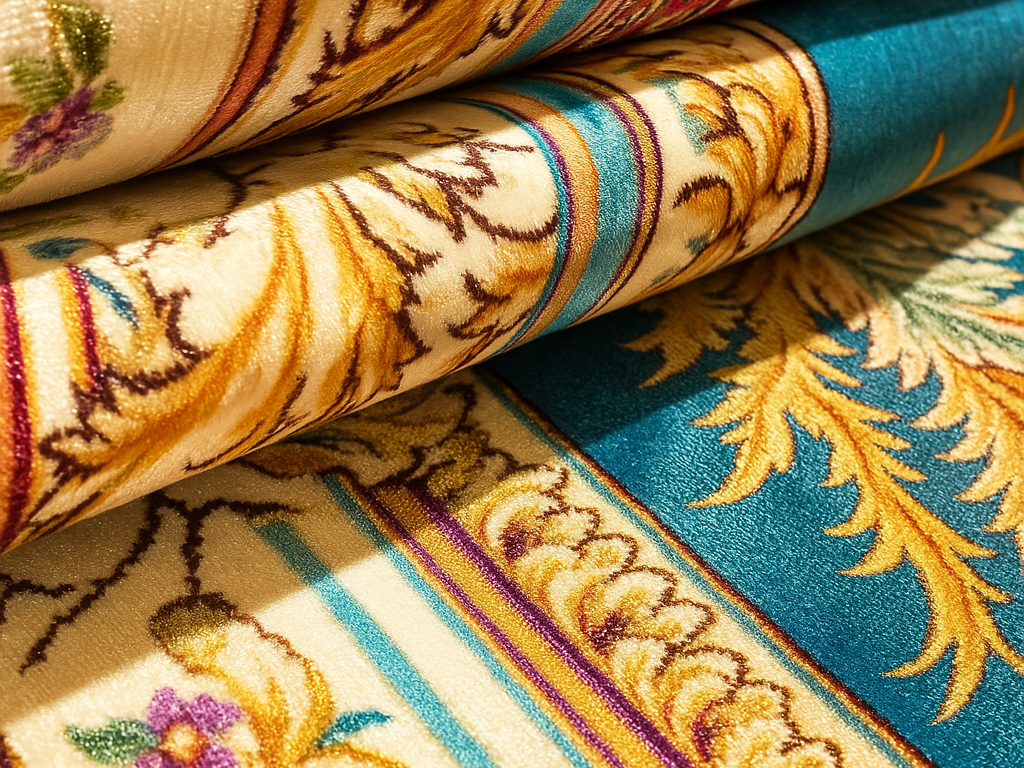Vous vous trouvez à la croisée des chemins en matière de tapis et vous vous demandez s'il est possible d'obtenir un certificat d'aptitude à l'emploi. polyester ou nylon est le choix le plus intelligent et le plus durable sous les pieds ? Vous n'êtes pas seul. Le débat sur les tapis en polyester ou en nylon porte sur tous les aspects, de la douceur et de la résistance aux taches à la durabilité, en passant par l'impact écologique et le coût.
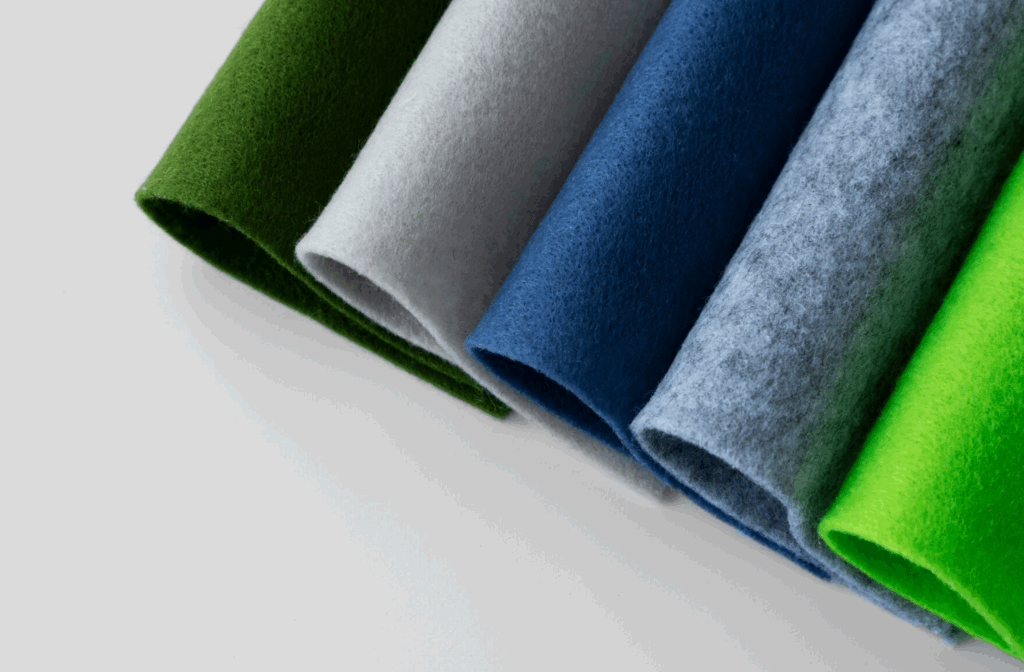
Dans cet article, vous découvrirez la nature distinctive de chaque fibre : le polyester offre un luxe éclatant et facile à nettoyer, tandis que le nylon reste la référence en matière de résistance. Nous vous présenterons les avantages et les inconvénients, des comparaisons côte à côte et des conseils d'experts pour vous aider à choisir la meilleure solution pour chaque pièce de votre maison.
À la fin, vous saurez exactement quand opter pour un polyester moelleux ou investir dans un nylon de qualité - et comment choisir la bonne option. ValHak. Plongeons dans le vif du sujet.
1. Comprendre les moquettes en polyester et les moquettes en nylon
Lorsque vous choisissez une nouvelle moquette pour votre maison ou votre entreprise, deux fibres synthétiques dominent le marché : polyester (souvent PET) et Nylon (polyamide). Chacun a sa propre chimie, sa propre texture et son propre profil de performance.
Qu'est-ce qu'une moquette en polyester ?
Polyester tapis-souvent fabriqués à partir de PET (polyéthylène téréphtalate) ou de variantes plus récentes telles que le PTT- sont appréciés pour leur des options de couleurs vibrantesla douceur, et qualités hydrophobes. De nombreuses moquettes en PET sont fabriquées à partir de bouteilles en plastique recyclées, ce qui en fait un choix respectueux de l'environnement.
Qu'est-ce qu'un tapis en nylon ?
Tapis en nylonLes produits de l'industrie de la pêche, fabriqués à partir de fibres polyamides durables telles que le nylon-6 ou le nylon-6,6, sont la norme établie de longue date pour les produits de l'industrie de la pêche et les produits de l'agriculture. durabilité et résilience. Ils peuvent supporter un trafic intense et rebondir en cas de compression. Nombre d'entre eux sont traités ou teintés dans la masse pour renforcer la résistance à l'usure. résistance aux taches et à la décoloration.
2. Avantages et inconvénients des moquettes en polyester
Lorsqu'il s'agit de moquette, polyester-en particulier le PET (polyéthylène téréphtalate) et les variantes PTT- a acquis une réputation de douceur et de couleurs vives. Mais comme tout textile, il présente des avantages et des inconvénients. Voici un aperçu approfondi, avec une vision nuancée pour transmettre à la fois de la clarté et de la voix.
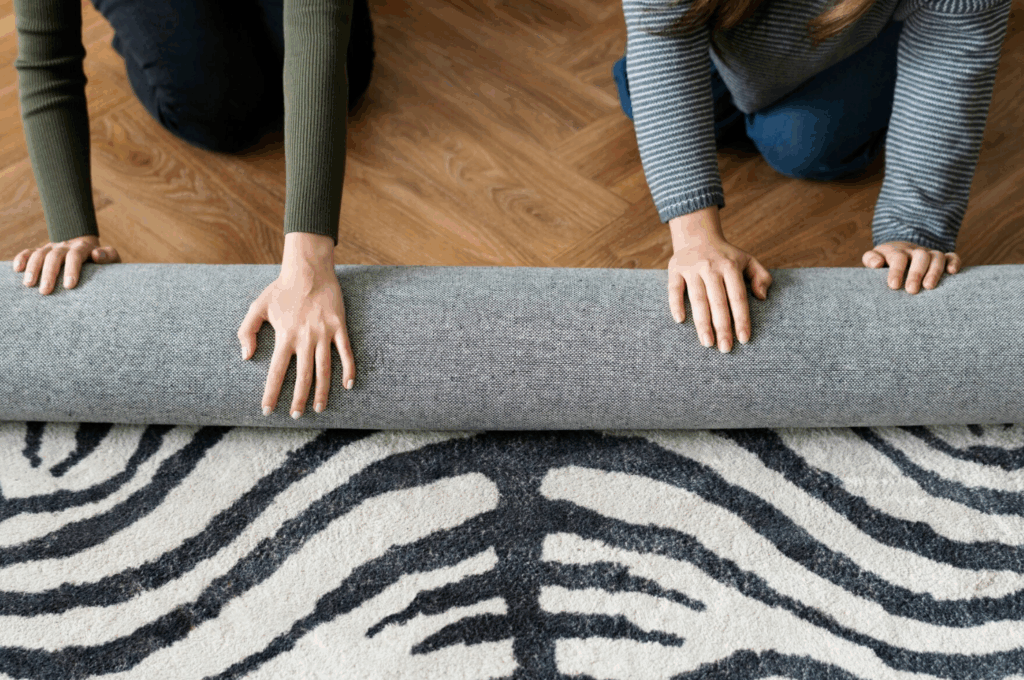
Avantages des moquettes en polyester
Le luxe à petit prix
La moquette en polyester se classe systématiquement parmi les revêtements de sol synthétiques les plus abordables. De nombreuses sources indiquent que les prix varient généralement entre 10-30% inférieur au nylon comparable même en puisant dans le budget de l'Union européenne. $1-$3 par pied carré en fonction du style et des coûts d'installation. Pour les grands projets ou les rénovations locatives, cette rentabilité se traduit par une valeur réelle sans sacrifier l'attrait esthétique.
Couleurs vives et résistantes à la décoloration
Parmi les fibres synthétiquesLe polyester se distingue par son affinité des colorants et clarté des couleurs. Il absorbe les pigments vibrants en profondeur, offrant des teintes saturées et une finition homogène, même dans les pièces ensoleillées et exposées aux UV. Au fil du temps, la couleur tend à se maintenir sans se ternir.
Résistance inhérente aux taches et à l'eau
Le nature hydrophobe du polyester repousse les déversements à base d'eau - café, jus, vin - et les empêche de pénétrer dans les fibres. Les propriétaires disposent ainsi d'une plus grande marge de manœuvre pour éponger et nettoyer avant que les taches ne se produisent. Sa structure à cellules fermées résiste à l'humidité, ce qui permet aux moquettes de conserver leur aspect neuf plus longtemps dans les zones sujettes aux éclaboussures.
Toucher doux et confortable
La douceur est l'une des caractéristiques des moquettes en polyester. Pelucheuse et veloutée sous les pieds, elle surpasse souvent le nylon en termes de confort tactile, en particulier avec des fibres plus fines et une densité de poils élevée. Les chambres à coucher, les salles de jeux et les salons bénéficient de sa chaleur accueillante.
Options écologiques disponibles
De nombreuses moquettes en polyester sont fabriquées à partir de PET recyclé, comme des bouteilles en plastique réutilisées, ce qui constitue une alternative plus écologique pour les acheteurs soucieux de l'environnement. La recyclabilité en fin de vie et la réduction de l'impact sur les décharges sont des avantages supplémentaires, à condition que des programmes de recyclage locaux soient disponibles.
Réduction de l'électricité statique et qualités hypoallergéniques
Le polyester tend à générer moins d'électricité statique que le nylon dans des conditions de faible humidité. Il résiste également aux moisissures dans les environnements domestiques typiques grâce à sa structure qui repousse l'humidité. Ces caractéristiques en font un produit adapté aux ménages sensibles.
Inconvénients des moquettes en polyester
Limites de durabilité
Bien que le polyester présente de nombreux avantages, il est en retard sur le nylon en matière de résilience. La structure de la fibre tend à comprimer et matelasser, en particulier dans les les zones à fort trafic comme les couloirs ou les escaliers. Au fil du temps, il peut perdre de son gonflant et paraître plus rapidement usé - généralement pour une durée de 5-15 ans en fonction de l'entretien et de l'utilisation.
Faible résilience et rebond
Contrairement au nylon, le polyester ne rebondit pas. Les marques d'aspirateur, les empreintes de meubles et le passage des piétons peuvent laisser des traces sur le tissu. les schémas de circulation permanents. Les fibres comprimées sont plus lentes à se reconstituer, ce qui donne à la moquette un aspect plat ou vieilli prématurément.
Vulnérabilité aux taches d'huile
Bien qu'il soit excellent pour repousser l'eau, le polyester a du mal à résister à l'eau. les déversements d'huiles et de graisses. Ils peuvent s'infiltrer dans la fibre et attirer la saleté s'ils ne sont pas traités rapidement. Quelques-uns les taches deviennent très difficiles à nettoyermême sur le plan professionnel.
Chocs statiques en milieu sec
Bien que moins que le nylon, le polyester peut encore produire de l'électricité statique dans les pièces à faible humidité, en particulier pendant les mois d'hiver. Ce phénomène peut provoquer une gêne occasionnelle ou de petites étincelles, bien que des mesures simples (comme l'augmentation de l'humidité intérieure) permettent de l'atténuer.
Les inconvénients pour l'environnement
Même le polyester recyclé est dérivé de matières premières à base de pétrole. Il est plus lent à se dégrader et, s'il n'est pas recyclé, il contribue à l'accumulation de déchets dans les décharges. Tous les polyesters ne sont pas certifiés à faible teneur en COV ou exempts de PFAS, c'est pourquoi les acheteurs doivent vérifier attentivement les spécifications du produit.
Potentiel d'abrasion et de boulochage
En cas de frottement répété, par exemple sous les chaises, les mouvements des animaux de compagnie ou le passage des pieds, le polyester peut s'abîmer ou pelucher. La texture de la surface peut se détériorer au fil du temps, surtout si l'on ne procède pas à un entretien de routine, comme le passage de l'aspirateur ou un nettoyage professionnel.
3. Avantages et inconvénients des moquettes en nylon
Le nylon, également connu sous le nom de polyamide, est une fibre synthétique de haute performance pour moquettes, introduite pour la première fois par DuPont dans les années 1930. Son évolution a fait de lui un chef de file dans le domaine des moquettes grâce à sa résistance, sa résilience et son adaptabilité remarquables.

Avantages des moquettes en nylon
Durabilité et résilience inégalées
Le nylon est réputé pour sa capacité à résister à un trafic piétonnier intenseIl résiste à l'écrasement et au matage même dans les endroits très fréquentés comme les escaliers, les couloirs ou les salles de séjour. Il est littéralement rebonditLa hauteur et la texture des poils sont préservées au fil des années d'utilisation.
Résistance efficace aux taches (avec traitement)
Le nylon non traité peut absorber les liquides renversés, le nylon teint dans la masse ou les fibres traitées avec des revêtements avancés améliorent considérablement la résistance aux taches. Avec un soin approprié, les liquides courants comme le café ou le vin peuvent être nettoyés rapidement avant qu'ils ne durcissent.
Polyvalence des couleurs et des styles
La forte affinité du nylon pour les colorants et les technologies de finition favorisent l'utilisation de la fibre de verre. un large éventail de couleurs, de textures et de styles de poils-Les tapis peuvent être très variés, allant du luxe pelucheux au berbère bouclé. Ils ont tendance à conserver leur éclat et leur structure au fil du temps.
Douceur et confort
Malgré sa solidité, le nylon peut offrir une résistance surprenante. sensation de douceur sous le piedLes fibres de coton peuvent être utilisées pour la fabrication de vêtements, en particulier dans les constructions haut de gamme ou avec des fibres teintées dans la masse, conçues pour être lisses.
Conservation et longévité de la texture
Le nylon à poils coupés conserve bien sa torsion et sa densité, résiste à l'usure et conserve son aspect d'origine. Lorsqu'il est nettoyé périodiquement à la vapeur, les fibrilles s'effilochent à nouveau, ce qui redonne de la douceur et du rebond.
Hypoallergénique et résistant aux moisissures
Le nylon ne retient pas la poussière en profondeur dans sa structure et résiste mieux aux moisissures que les fibres naturelles, ce qui le rend plus propre et plus sain au fil du temps s'il est conservé au sec.
Options anti-statiques disponibles
De nombreuses moquettes en nylon sont prétraitées pour réduire l'électricité statique, ce qui est un avantage dans les environnements frais et secs. Ce traitement offre un plus grand confort et réduit les chocs statiques occasionnels.
Des options de plus en plus durables
Certains fabricants utilisent désormais nylon recyclé (par exemple, à partir de déchets post-industriels ou de filets de pêche). Bien que leur production consomme beaucoup d'énergie, ces options contribuent à réduire l'impact sur l'environnement.
Inconvénients des moquettes en nylon
Coût initial plus élevé
Les moquettes en nylon coûtent généralement $3 à $8+ par pied carréLes textiles de qualité supérieure ou personnalisés dépassent parfois $10 par mètre carré. Bien que le prix soit élevé, la durabilité peut s'avérer plus avantageuse à long terme.
Moins de résistance inhérente aux taches
À moins d'être teint dans la masse ou de subir un traitement spécial, le nylon absorbe plus facilement les liquides renversés que le polyester hydrophobe. Le traitement est essentiel.
Risque de décoloration au fil du temps
Même le nylon résistant aux teintures peut se décolorer en cas d'exposition prolongée et intense au soleil. Il est recommandé d'appliquer des traitements de fenêtre ou une protection contre les UV dans les pièces lumineuses et éclairées par le soleil.
Statique dans des conditions sèches
Le nylon non traité peut générer de l'électricité statique dans les environnements peu humides, en particulier en hiver. Opter pour des sélections traitées antistatiques ou utiliser des humidificateurs peut s'avérer utile.
Préoccupations en matière d'environnement et d'émissions
La production de nylon est à forte intensité énergétique et produit une empreinte carbone significative - environ 5-6 kg de CO₂e par kg de fibres. Il faut également des décennies pour qu'il se dégrade s'il est mis en décharge. Les possibilités de recyclage sont limitées mais en augmentation.
Rétention de la chaleur dans les climats chauds
Le nylon a tendance à retenir la chaleur, ce qui peut le rendre chaud et moins respirant dans les environnements chauds, en particulier avec des configurations de poils denses et pelucheux.
4. Moquette en polyester et moquette en nylon : Comparaison détaillée
La mise en évidence des différences entre moquette en polyester et moquette en nylon est essentiel si vous recherchez la moquette idéale pour votre espace. Ci-dessous, nous les comparons en fonction des dimensions clés qui comptent le plus : la durabilité, la résistance aux taches, le coût, la douceur, l'impact écologique et l'entretien.
| Fonctionnalité | Tapis en polyester | Tapis en nylon |
| Durabilité | Modéré (5-15 ans) | Excellent (10-20 + ans) |
| La résilience | Faible rebondissement, tendance à l'écrasement | Rebondissement important ; rebondissement sous pression |
| Résistance aux taches | Repousse naturellement les taches à base d'eau | Dépend du traitement ; le nylon non traité absorbe les liquides renversés. |
| Rétention des couleurs | Teintures vives et résistantes à la décoloration | Bon, surtout s'il est teinté dans la masse |
| Douceur | Très doux sous le pied | Le nylon moderne variable rivalise avec la douceur du polyester |
| Coût typique | $3-5/ft² installé | $5-7.50/ft² installé |
| Impact sur l'environnement | PET souvent recyclé, empreinte réduite | Empreinte plus importante ; recyclage limité, existence d'un nylon de recyclage |
| Maintenance | Nécessite un entretien régulier et un nettoyage en cas de déversement | Résistant au nettoyage, il reflue avec l'aide d'un professionnel |
5. Comment choisir entre une moquette en polyester et une moquette en nylon ?
Le choix de la bonne fibre de moquette ne se résume pas à une couleur ou à une texture. Il dépend de votre mode de vie, de ce qui compte le plus en termes de durabilité et du fait que les taches et le budget sont au cœur de vos priorités. Cette section vous aide à évaluer les choix de façon claire et en toute confiance.
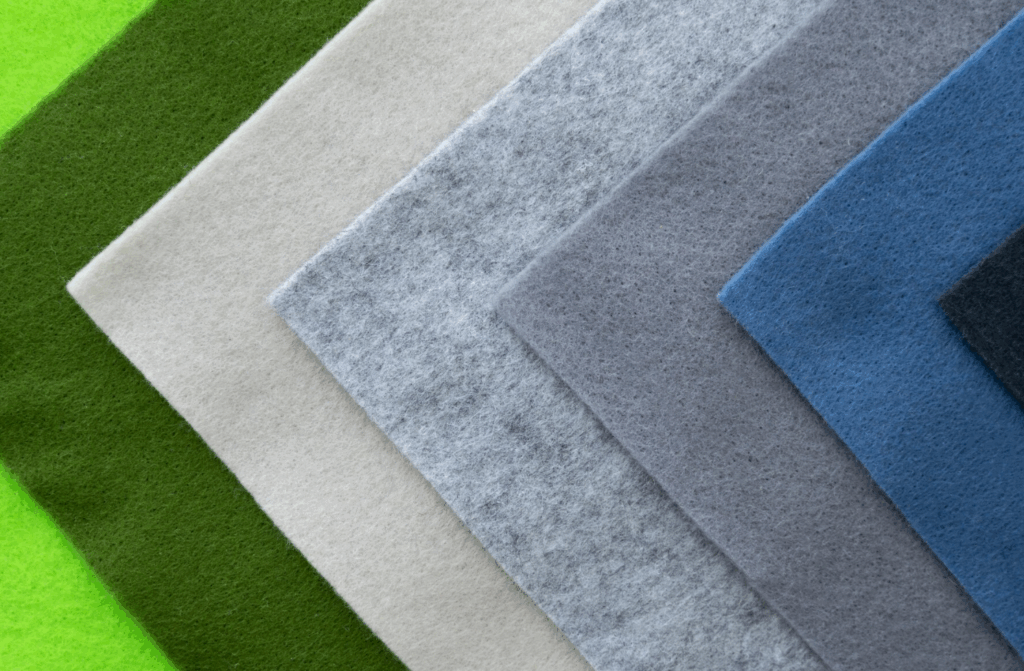
Définir les besoins en tapis de votre maison
Commencez par votre environnement :
- Trafic piétonnier: Les zones à forte fréquentation - couloirs, escaliers, salles de séjour - bénéficient d'une du nylon la résistance et l'élasticité. Le polyester peut s'user plus rapidement dans ces zones.
- Risque de tache: Le polyester repousse naturellement les éclaboussures à base d'eau, ce qui en fait un produit idéal pour les maisons où l'on trouve de l'eau. enfants ou animaux domestiquesmais il doit être traité ou évité en cas de déversement de matières grasses. Le nylon nécessite teinture en solution ou vernis de protection pour atteindre cette performance.
Niveau de trafic et longévité
- Si votre moquette doit résister à l'usure quotidienne et garder sa forme, Nylon est le grand gagnant-Durée de vie de 10 à 20 ans et plus en cas d'utilisation intensive.
- Un système bien entretenu polyester tapisEn revanche, il donne de bons résultats pour les 5-15 ans dans les pièces à faible fréquentation.
Gestion des déversements et résistance aux taches
- Polyester a un avantage naturel dans ce domaine : sa nature hydrophobe permet de nettoyer rapidement et efficacement les taches à base d'eau. Les taches à base d'huile, en revanche, nécessitent une action rapide.
- Nylon peut être presque aussi performant, mais seulement s'il est teintés dans la masse ou traités; sinon, les déversements s'enfoncent rapidement.
Confort et préférences esthétiques
- Pour la douceur, beaucoup préfèrent encore le polyester, mais moderne Nylon fibres sont souvent comparables au toucher pelucheux du polyester, en particulier dans les textures haut de gamme.
- Les deux offrent un large éventail de teintes et de finitions.le polyester brille surtout par ses couleurs vives et résistantes à la décolorationtandis que le nylon couvre davantage de types de textures comme la frise, la sculpture et le berbère.
Environnement & Préoccupations en matière de durabilité
- Recherchez le polyester PET recyclé - fabriqué à partir de bouteilles en plastique - pour des qualités écologiques solides.
- Le recyclage du nylon existe, mais son production à forte intensité énergétique et une infrastructure de recyclage limitée se traduisent souvent par une empreinte carbone.
Budget et valeur du cycle de vie
- Polyester coûte initialement moins cher - généralement $3-5/ft² installé.
- NylonEn raison de sa durabilité et de ses performances, il fonctionne plus souvent que les autres. $5-7.50/ft²mais peut permettre d'économiser de l'argent au fil du temps si l'usure est importante.
6. Des tapis en polyester et en nylon de qualité chez ValHak
Au ValHakNous sommes fiers de proposer des moquettes en polyester de qualité supérieure et en nylon haute performance, soutenues par notre expertise, la transparence de nos sources d'approvisionnement et l'attention que nous portons à nos clients.
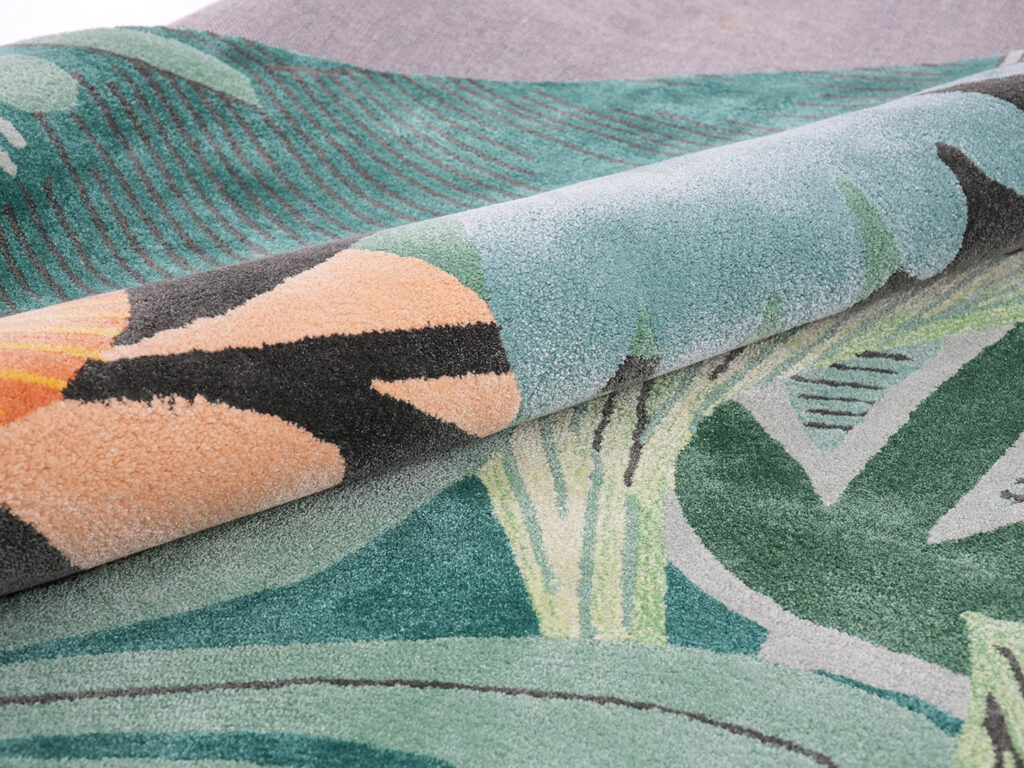
- ValHak Polyester Collection - Fibres PET écologiques (souvent recyclées) - Moquettes pelucheuses, saturées de colorants, dans des teintes vives - Idéales pour les chambres à coucher, les chambres d'amis et les zones peu fréquentées
- ValHak Nylon Collection - Fibres de nylon renforcées, souvent teintées dans la masse ou dotées d'une protection avancée contre les taches - Résistance élevée au trafic : convient aux escaliers, aux salons et aux bureaux - Résilience rapide et longues garanties
Pourquoi choisir ValHak ?
- Nous proposons fiches techniques détaillées afin de comparer le type de fibre, la densité des poils, le niveau de protection contre les taches et la garantie.
- Notre conseils d'installation et instructions d'entretien aider à maximiser la durée de vie.
- Eco étiquetage et contenu recyclé sont clairement identifiés - parfaits pour les consommateurs conscients.
Conseil de pro: Lorsque vous naviguez, recherchez des termes tels que "teinté dans la masse Nylon"pour une résistance supérieure aux taches et à la décoloration, ou "PET recyclé polyester"pour une moquette durable et vibrante.
7. Conclusion
Dans l'éternel débat sur la polyester vs. Nylon tapisIl n'y a pas de réponse unique. Elle dépend en fin de compte de vos priorités :
- Choisir Nylon si durabilité, résistance au trafic intenseet investissement à long terme sont essentiels.
- Choisir polyester si vous voulez douceur, coloration vibrante, résistance aux déversementset le prix de la valeur.
- Les deux fibres offrent désormais options écologiquesmais le polyester est généralement le plus important en termes de contenu recyclé.
- De nombreux logements bénéficient d'une approche hybride : Nylon dans les espaces publics, polyester dans des pièces privées ou peu fréquentées.
Au ValHakVous y trouverez les deux types de produits, accompagnés de conseils d'experts pour faire le bon choix en fonction de votre style de vie et de vos sols.
8. FAQ
- Qu'est-ce qui dure le plus longtemps : une moquette en polyester ou en nylon ?
Nylon dure généralement plus longtemps (10-20 ans+) alors que le polyester peut durer de 5 à 15 ans en fonction du trafic.
- Le polyester dissimule-t-il mieux les taches ?
Oui, le polyester repousse naturellement les liquides renversés, ce qui facilite le nettoyage.
- Le nylon peut-il résister aux taches ?
Oui, mais seulement si traité ou teinté dans la masse. Le nylon non traité absorbe plus rapidement les liquides renversés.
- Le polyester est-il plus écologique que le nylon ?
Souvent oui. De nombreuses moquettes en polyester utilisent du PET recyclé. Le nylon peut également être recyclé, mais sa production est plus énergivore.
- Le nylon peut-il être aussi doux au toucher que le polyester ?
Les fibres de nylon haut de gamme offrent aujourd'hui une douceur comparable à celle du polyester - vérifiez la qualité et le type de poils.

